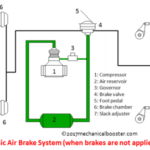Introduction
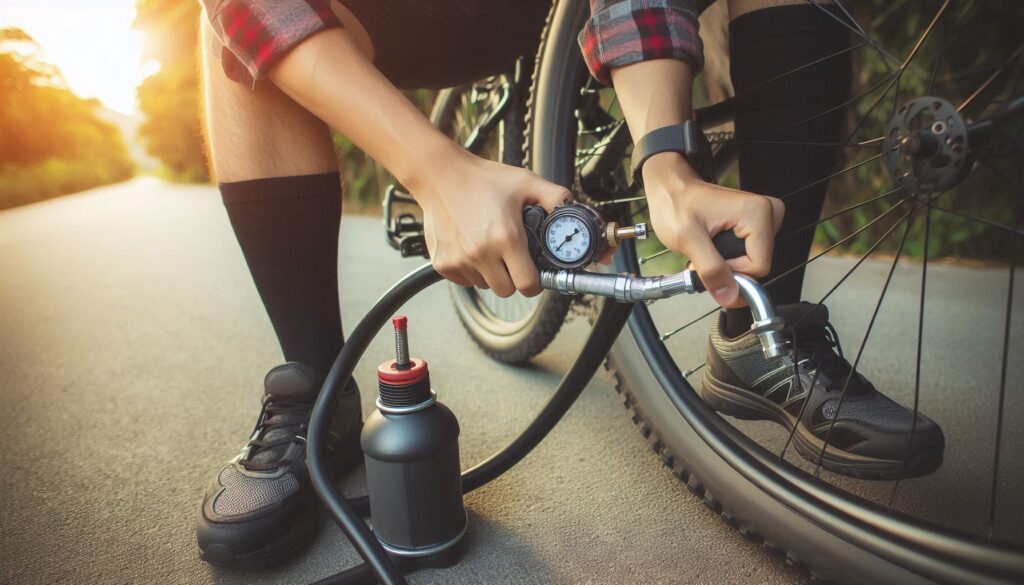
When you are a bike lover and you want a very smooth ride with your bike. A proper bike tire pressure make your ride more smooth, enjoyable then bumpy and exhausting one. The knowledge of accurate tire pressure of bike is very crucial for your safety, comfort and performance. In this guide we will tell you everything that you need to know for your bike tire pressure so that you can always riding at your best.
Understanding Bike Tire Pressure
when we say bike tire pressure, it means that how much air is present inside your bike tires. The tire pressure is measured in PSI (pounds per square inch), bar and kPa (kilopascal). For your bike to perform safely and efficiently, it is essential that your bike should contain optimal tire pressure.
Why Proper Tire Pressure Matters
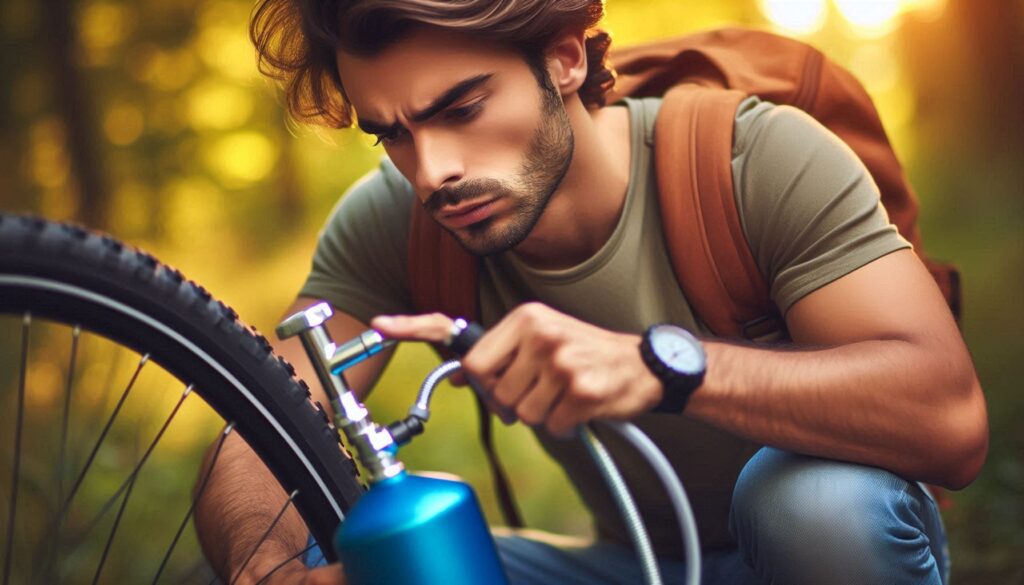
Safety
When your bike is at correct tire pressure, you are at the safest level. A overinflated or underinflated tires can results in blowouts (bursting of tire), compromised in handling and a greater risk of accidents.
Maintaining the correct tire pressure is vital for your safety. Overinflated or under-inflated tires can lead to blowouts, compromised handling, and increased risk of accidents.
Performance
Having a proper tire pressure in your bike, increases you bike’s performance.
- It reduces the rolling friction between road and tires and improves speed and efficiency.
- You need less energy to pedal and makes your riding more smooth and fast.
Comfort
A proper tire pressure provides you a comfortable riding experience. A tire that is properly inflated can absorbs road shocks in a better way and gives you a more smoother and fatigue less ride.
Also Read:
- Top 6 Best Portable Tire Inflator For Car in 2024
- Top 5 Best Digital Tire Pressure Gauges of 2024
- Top 5 Best Cordless Impact Wrench For Changing Tires of 2024
Factors Affecting Optimal Tire Pressure
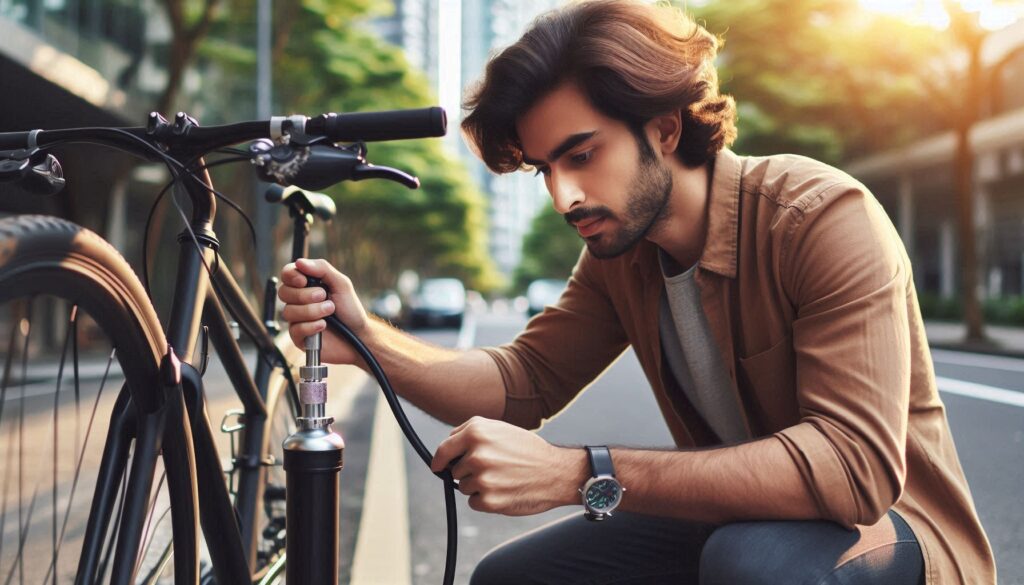
Type of Bike
The optimum tire pressure in your bike depends on the bike type you are using. The below given table gives you an idea about how much air should be there in your bike.
| Types of Bike | Optimum Tire pressure Range | |
| Road Bikes | 80-130 PSI | |
| Mountain Bikes | 30-50 PSI | |
| Hybrid Bikes | 50-70 PSI | |
| Gravel Bikes | 40-70 PSI |
Road Bikes
The tire pressure for road bikes ranges between 80-130 PSI for smooth surfaces and maximum speed.
Mountain Bikes:
Mountain bikes requires Lower pressure (30-50 PSI) for better traction on rough trails.
Hybrid Bikes:
Moderate pressure (50-70 PSI) to get versatile riding conditions.
Gravel Bikes:
Its tire pressure is slightly lower than road bikes (40-70 PSI) for mixed terrain.
Rider Weight
The weight of the rider plays a crucial role in bike tire pressure. A heavier rider require higher tire pressure so that the tire do not gets flattened and we get an optimal performance. It is always recommended to adjust your bike’s tire pressure according you weight.
Terrain and Riding Conditions
- Smooth Roads: Higher pressure for reduced rolling resistance.
- Rough Trails: Lower pressure for better grip and shock absorption.
- Wet Conditions: Slightly lower pressure can improve traction.
How to Check and Adjust Tire Pressure
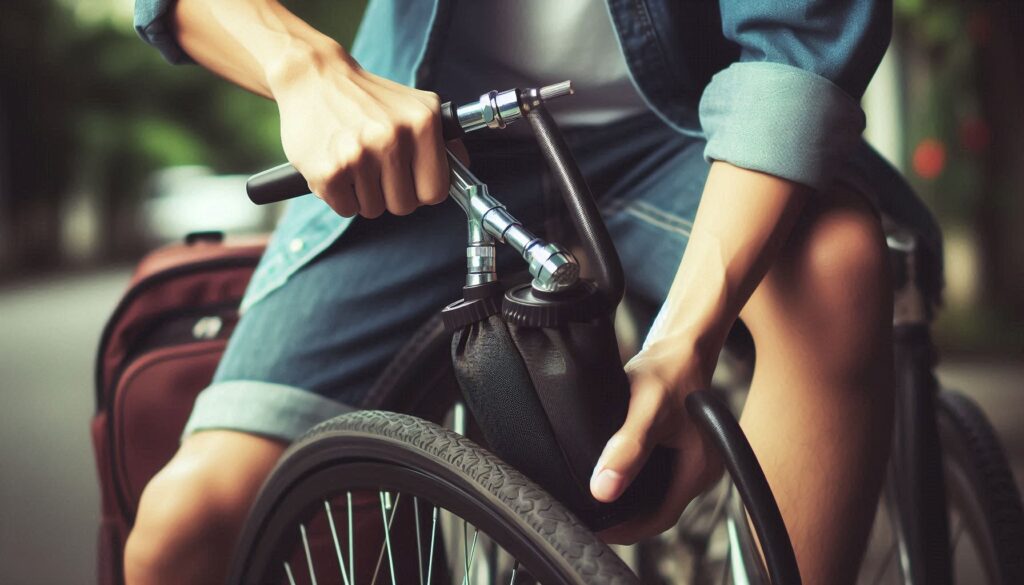
Tools Needed
- Tire pressure gauge
- Bike pump (manual or electric)
Steps to Check Tire Pressure
- Remove the valve cap.
- Attach the pressure gauge to the valve.
- Read the pressure displayed on the gauge.
Steps to Inflate or Deflate Tires
- Use a bike pump to add air if the pressure is low.
- Press the valve to release air if the pressure is too high.
- Re-check the pressure to ensure it’s within the recommended range.
Recommended Tire Pressure Ranges
- Road Bikes: 80-130 PSI
- Mountain Bikes: 30-50 PSI
- Hybrid Bikes: 50-70 PSI
- Gravel Bikes: 40-70 PSI
Always refer to your bike manufacturer’s recommendations and adjust based on your personal riding preferences and conditions.
Common Mistakes and How to Avoid Them
- Overinflating Tires: Can cause a harsh ride and increase the risk of blowouts.
- Underinflating Tires: Leads to increased rolling resistance and potential damage to the rims.
- Not Checking Tire Pressure Regularly: Pressure can change over time, so regular checkings are essential.
- Ignoring Temperature Changes: Cold weather can lower tire pressure, while hot weather can increase it.
Tips for Maintaining Proper Tire Pressure
- Check tire pressure before every ride.
- Keep a portable pump and gauge handy.
- Regularly inspect tires for wear and damage.
- Adjust pressure for seasonal changes and specific riding conditions.
Conclusion
Maintaining proper tire pressure is crucial for a safe, comfortable, and efficient ride. By regularly checking and adjusting your bike tire pressure, you can enhance your biking experience and avoid common issues. Remember, the right tire pressure not only improves your ride but also extends the life of your tires. So, keep those tires properly inflated and enjoy the ride!







